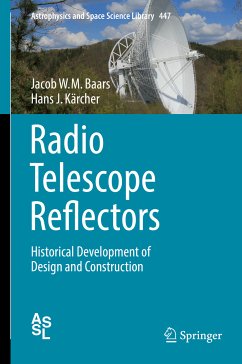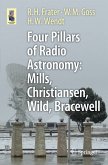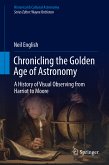This book demonstrates how progress in radio astronomy is intimately linked to the development of reflector antennas of increasing size and precision. The authors describe the design and construction of major radio telescopes as those in Dwingeloo, Jodrell Bank, Parkes, Effelsberg and Green Bank since 1950 up to the present as well as millimeter wavelength telescopes as the 30m MRT of IRAM in Spain, the 50m LMT in Mexico and the ALMA submillimeter instrument. The advances in methods of structural design and coping with environmental influences (wind, temperature, gravity) as well as application of new materials are explained in a non-mathematical, descriptive and graphical way along with the story of the telescopes. Emphasis is placed on the interplay between astronomical and electromagnetic requirements and structural, mechanical and control solutions. A chapter on management aspects of large telescope projects closes the book. The authors address a readership with interest in theprogress of engineering solutions applied to the development of radio telescope reflectors and ground station antennas for satellite communication and space research. The book will also be of interest to historians of science and engineering with an inclination to astronomy.
Dieser Download kann aus rechtlichen Gründen nur mit Rechnungsadresse in A, B, BG, CY, CZ, D, DK, EW, E, FIN, F, GR, HR, H, IRL, I, LT, L, LR, M, NL, PL, P, R, S, SLO, SK ausgeliefert werden.









